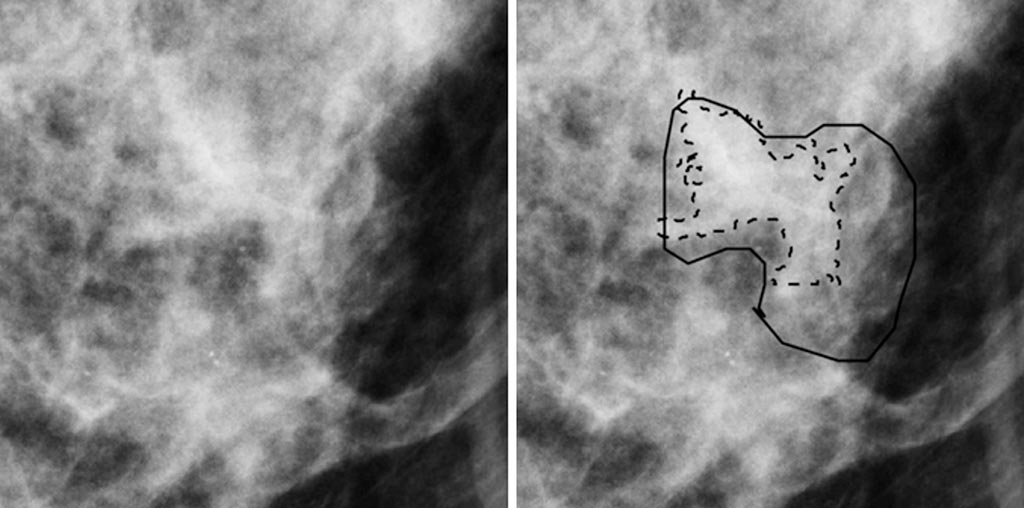Mammography Radiomics Can Help Classify Breast Masses
By MedImaging International staff writers
Posted on 25 Dec 2018
A new technique that combines three-compartment breast (3CB) image analysis and mammography radiomics could help reduce unnecessary breast biopsies, claims a new study.Posted on 25 Dec 2018
Researchers at the University of Chicago (IL, USA), the University of California, San Francisco (UCSF; USA), and the Lee Moffitt Cancer Center and Research Institute (Tampa, FL, USA) conducted a prospective study involving 109 women (mean age 51 years) with category 4 or 5 breast masses. Dual-energy craniocaudal and mediolateral oblique mammograms were obtained immediately before biopsy to calculate the three quantitative compartments (water, lipid, and protein thickness) at each pixel. The masses were automatically segmented and features extracted from the low-energy mammograms and the quantitative compartment images.

Image: A 50-year-old woman that has invasive cancer without (L) and with (R) radiologist and computer delineations (Photo courtesy Karen Drukker/ University of Chicago).
Tenfold cross-validation was used to differentiate between the 35 malignant and 74 benign masses by means of water-lipid-protein composition images alone, mammography radiomics alone, and combined image analysis using both methods. The results revealed that a combination of 3CB image analysis and radiomics improved positive predictive value (PPV) from 32% for visual interpretation alone to almost 50%, with a concomitant 36% reduction in biopsies. The 3CB-radiomics missed just one of the 35 invasive cancers, a 97% sensitivity rate. The study was published on December 11, 2018, in Radiology.
“3CB can easily be added to mammography without requiring extensive modifications of existing equipment; the patient is already getting the mammography, plus we get all this extra information with only a ten percent additional dose of radiation,” said lead author Karen Drukker, PhD, of the University of Chicago department of radiology. “The combined 3CB-radiomics approach has the potential to play an increasingly prominent role in breast cancer diagnosis, and perhaps also screening.”
Radiomics is an extension of computer-aided diagnosis and refers to the comprehensive quantification of tumor phenotypes by extracting a large number of quantitative image features for data mining and precision medicine. In recent years radiomics has successfully extracted a variety of clinically relevant features, merging them into signatures, in order to estimate the probability of malignancy of identified breast cancer lesions.
Related Links:
University of Chicago
University of California, San Francisco
Lee Moffitt Cancer Center and Research Institute














